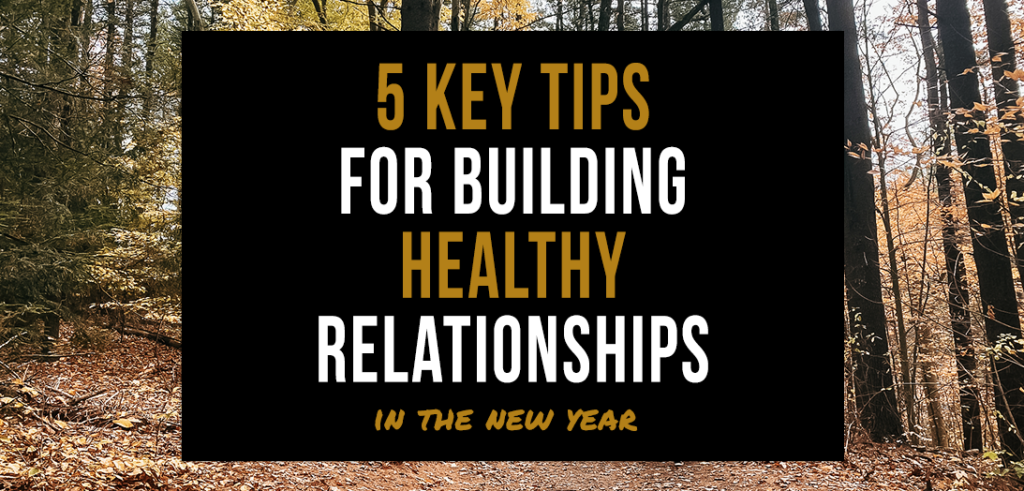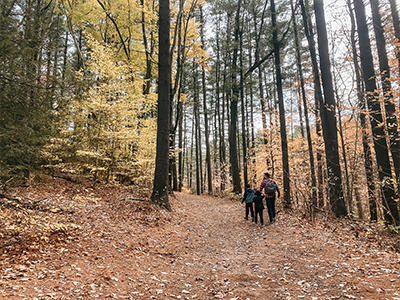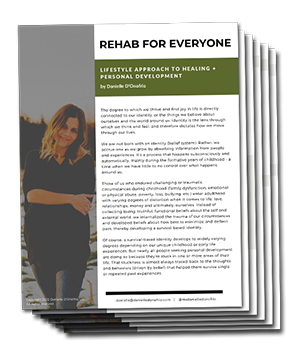
People let us down. It’s part of life. But if you’ve survived emotional trauma in past relationships – let down can feel like a devastating confirmation that people, in general, are unsafe.
As adult children, we’re generally quite good at coping with the ups and downs of relationships. Afterall, we’ve grown and developed under conditions that primed us for it.
But as we navigate deeper into healing and growth, our defenses soften and we find ourselves yearning for authentic connection, intimacy and a wider circle. And it’s no wonder. Relationships and community are some of the most important aspects of life and longevity. Humans have an innate need for love, affection, support and interpersonal joy. So, as we progress along our own journeys, we must learn to integrate healthy relationships in a functional way.
The good news is, you’ll naturally attract healthy relationships as you heal and grow.
Based on the law of attraction, we’re always going to attract people (and things, opportunities, experiences, etc.) that vibe with our current thoughts and energy. As you improve, so will your relationships.

Just remember to keep up your stamina and prepare for turnover.
Healing lasts a lifetime and there’s A LOT of personal change involved. You’re going to attract (and repel) different people at every stage of your journey. Some people will stick around for the long run. But many will fall away as you grow, upgrade your standards, develop a deeper sense of self-love and self-respect, and become more skilled in setting boundaries.
While this “shedding” of sorts will feel sad and difficult and even threatening at times, it’s critical to (lovingly) let go when the time comes.
Keeping people around when you’ve outgrown them will stagnate your growth and create an environment where dysfunction can fester.
And look, letting go is hard. In fact, our conditioning often compels us to do the opposite. The impulse will be to cling – to abandon yourself to avoid being abandoned.
It’s moments like these when we must recognize our conditioning and act despite it.
It’ll all feel unfamiliar at first, because it’s new. But that’s OK. In many ways, familiarity is what we want to avoid when it comes to healing and growth.

To ensure your conditioning doesn’t sabotage your progress, approach healthy relationships building with intention (and rules). You’ll find both below in my 5 Key Tips for Building Healthy Relationships in the New Year.
(Note: I’m big on setting rules for myself because they help me stick to new behaviors rather than falling back to old conditioning – especially in relationships. So, with each tip you’ll see an example rule you can set for yourself. Use mine or create your own!)
5 Key Tips for Building Healthy Relationships in the New Year
1. Set an intention.
If you’re headed somewhere new in your life, it’s important to know which direction “somewhere” is. Otherwise, it’ll be impossible to make sound decisions and stay on course along the way.
You can determine your direction by visualizing your future. Get started by asking yourself some questions, like: if I had a crystal ball, what would my life look like 5, 10, 20 years from now? More specifically, who are the people around me and what are they like? What do my relationships FEEL like?
Write your answers in a journal. This will serve as your intention, or the guiding light that leads you toward healthy relationships moving forward.
Example rule to set for yourself:
I will honor my intention by having the discipline to reject toxic relationships that hinder my healing and growth.
2. Reject codependent behaviors from yourself and others.
Many of us struggle with codependency, which is when we look to other people to help us define our worth and sense of self. We do this through people pleasing, rushing to help or rescue others, and “performing” rather than revealing our authentic selves.
Codependency is a dysfunctional trait that will work against you in the process of building healthy relationships, because it keeps the focus on other people. It also attracts dysfunctional personalities who detect our willingness to bend to their needs and whims.
Example rule to set for yourself:
When the impulse to please, rescue or perform shows up in my relationships, I will observe and acknowledge that impulse rather than act on it.

3. Determine your own rules of engagement (i.e., set boundaries)
Just like trauma responses, relationship habits are hard to break. Without consideration and planning, it’s easy to slip into old, toxic behaviors (and accept them from others).
So, with your intention in mind, take time to contemplate what’s acceptable and what’s not for you in your relationships. Think about the features of a relationship that make you feel joyful, supported and safe vs. uneasy, anxious and unworthy. You can also be more intentional about how much personal information you share, how much time you spend with certain people, where you get together, how you communicate…
Keep in mind that everyone has different boundaries and some people have no boundaries at all. You’ll also find that, quite often, people will take offense to your boundaries and react in unpleasant ways. None of this is your concern, though. You set the rules of engagement. If someone wants to be a part of your life, they respect your boundaries. Period.
Example rule to set for yourself:
I will communicate and maintain my boundaries regardless of how others feel about them – because by having boundaries, I am upholding my right to feel safe and at ease in my relationships.
4. Slow down and classify your connections
My husband taught me this one while I was struggling with a new friend a while back. He said to me, “You don’t have to make everyone your best friend. You have to put people into buckets.”
His point was that only some people belong in your inner circle. Others should be kept on the outer rim. And many shouldn’t be let in at all.
In other words, I had to start raising my standards when it came to who got access to my life.
Deep down, I already knew this. But I was ignoring red flags and letting too many people in, too quickly – which set me up for a lot of drama and disappointment.
Over time, I learned to slow down, get to know a person better, observe how I feel around them, and watch how they behave toward others – before becoming too vulnerable.
Example rule to set for yourself:
I will not give away my heart, mind, time or privacy for free. My life is exclusive; people must earn access.
5. Get Picky About Your Circle
This one’s really an add-on to the previous tip. It’s meant to help shift your mindset and instill a little attitude.
When it comes to people and relationships, some of us (myself included) can default into accepting any kind of relationship dynamic because we just want to make more friends. Quantity gives us a sense of security and helps us feel less alone (and less likely to be abandoned).
Casting too wide a net doesn’t set us up for healthy relationships, though. It sets us up for disappointment because we’re allowing too many people into our lives without running them through an intentional filter.
So, I encourage you to start getting very picky about who you let into your circle. You can do this by determining in advance what your filter allows through. Your filter will take into account your intention, your boundaries, the difference between your inner and outer circle, and how long you’ve known a person.
This doesn’t mean you’re blocking out healthy relationships for fear of hurt and disappointment. It means you recognize your worth.

Embracing these tips, along with an overall focus on healing and personal growth, will spark major change in how you build healthy relationships.
Just remember, it’s a process. You’re not going to get it right every time. I still fumble when allowing different people into my life. I also catch my old conditioning creep into my behaviors from time to time. But as we become more aware of our tendencies and better skilled in implementing healthy behaviors, relationship dynamics continue to improve.
Relationship building is just one aspect of my healing and personal development lifestyle methodology. Learn more about the methodology by downloading my FREE eBook here.
Also, follow on Facebook or Instagram for daily tips and inspiration.
Pictures taken on a family hike in Glastonbury, Connecticut – Fall 2022

